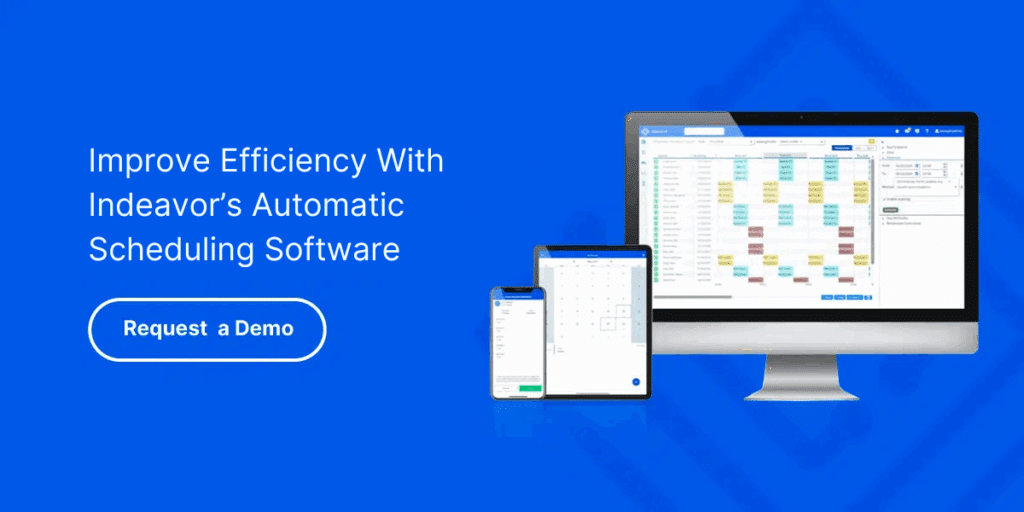Revenue growth alone can no longer be relied on to drive profitability in manufacturing. As top-line performance plateaus, leading CPG companies are turning to operational strategies like workforce forecasting to protect margins, especially when innovation, logistics, and automation investments no longer guarantee growth.
In fact, as Sevendots highlights in their analysis, “the volume challenge is increasingly obvious”. Global CPG giants are experiencing stagnating or even shrinking volume growth, and most recent financial performance has relied on price increases rather than true sales expansion.
One of the most controllable and often mismanaged costs in manufacturing is labor. When pricing levers have been pulled and revenue growth is limited by market conditions, the only remaining path to profit is controlling costs. This is where workforce forecasting steps in.
Margins Are Being Eroded by Labor Inefficiencies
Labor misalignment is a silent margin killer. When your workforce isn’t accurately matched to actual production demand, you’re left with two highly expensive scenarios:
- Overstaffing: Paying workers who aren’t fully utilized. This inflates the cost of goods sold (COGS) and reduces profit per unit produced.
- Understaffing: Missing production targets, triggering overtime, reducing quality, or paying premiums for last-minute labor coverage.
What’s worse is that both situations often occur simultaneously across different shifts or facilities. This variability becomes a major issue when scaling operations or responding to demand fluctuations.
Most companies have sophisticated tools for production planning. But few apply the same level of rigor to labor planning and workforce management forecasting.
What is Workforce Forecasting?
Workforce forecasting is the practice of anticipating labor needs by integrating real-time and projected production data with employee availability, skill sets, and compliance requirements. It allows organizations to plan labor supply as dynamically as they plan production volumes.
Where traditional scheduling is static and reactive, workforce forecasting is adaptive. It enables operations leaders to match the right number of employees to the right tasks before inefficiencies occur.
Modern labor management software allows manufacturers to integrate forecasting into their daily operations, bringing together siloed data streams (production, HR, compliance) into a unified view of labor needs.
This is especially critical in industries like food & beverage, chemicals, and durable goods, where small fluctuations in labor availability can have outsized impacts on yield, compliance, and profitability.
Why It Matters Now
With the volume game tightening and pricing power diminishing, manufacturers must optimize every controllable cost. According to Sevendots, “volume growth is trending downward across nearly all major categories, particularly in developed markets.” That means margins must be preserved through internal efficiencies, not external growth.
Labor is the largest variable cost for most manufacturers. Labor allocation and scheduling are among the most overlooked levers of operational performance. When staffing is misaligned, even slightly, it compounds across shifts, facilities, and time.
Without demand scheduling, workforce managers are left guessing. Or worse, reusing outdated shift plans from months prior. The result is misalignment between labor and production, leading to either waste or strain.
In a world where even a 1–2% improvement in labor efficiency can drive millions in savings, workforce forecasting is not just an optimization; it’s a competitive advantage.

The Shift From Reactive to Strategic Labor Planning
Historically, shift schedules were built manually, informed by passed-down knowledge and long-standing templates. But modern manufacturing operations are too complex for this model. Regulations, worker fatigue policies, training requirements, and union agreements all add layers of nuance.
Effective workforce forecasting doesn’t eliminate complexity; it manages it.
By integrating labor data with ERP, MES, or planning tools, manufacturers can:
- Adapt staffing to real-time changes in production schedules
- Minimize reliance on overtime and temporary workers
- Reduce absenteeism through better shift fit and lead time
- Ensure qualified workers are scheduled for the right jobs, at the right time
It’s not just about cost savings; it’s also about reducing turnover, improving product quality, and increasing employee engagement.
Why Most Companies Still Miss the Mark
Despite the growing interest in workforce optimization, many organizations still rely on generic labor management software that lacks deep workforce forecasting and scheduling functionality. These tools may track hours and attendance, but they don’t enable decision-making.
On the other hand, systems built for demand-based labor planning use predictive analytics, automate compliance, and provide role-specific insights, helping frontline managers plan ahead rather than react.
As McKinsey & Company emphasizes, digital workforce optimization tools that include advanced workforce forecasting have become essential for leaner operations. Companies that digitize labor forecasting and scheduling outperform their peers in labor efficiency, cost reduction, and agility.
Data-Driven Insights
Advanced workforce forecasting systems harness data analytics to deliver real-time, actionable insights that go beyond basic time tracking. By analyzing historical labor trends, production demands, and employee availability, these tools enable managers to predict staffing needs more accurately and adjust schedules proactively. This data-driven approach helps reduce costly overstaffing and understaffing, improving both productivity and employee satisfaction.
Moreover, these insights provide role-specific visibility that empowers frontline managers to address compliance requirements, skill gaps, and shift coverage challenges before they impact operations. Access to comprehensive labor data through workforce forecasting leads to continuous refinement of labor strategies, leading to leaner operations and a stronger competitive advantage.
Ready to Get Ahead?
If you’re searching for how to reduce labor costs, improve throughput, or reduce production cost in manufacturing, you need to start with your people. Workforce forecasting is the connective tissue between production planning and shift scheduling. When your labor supply is dynamically aligned with actual demand, you’re not just cutting waste, you’re building a more resilient, agile operation.
And in a low-growth, high-cost environment, that may be the only sustainable path to protect your margins. Indeavor helps enterprise manufacturers align labor supply with real-time demand, ensuring every shift is efficient, compliant, and cost-effective. By forecasting workforce needs, companies can better optimize labor resources and adapt swiftly to production changes.
Learn how our labor demand planning and workforce forecasting tools can reduce your labor costs and improve manufacturing margins. Contact us for a free consultation on your current labor planning and shift scheduling process to see how workforce forecasting software can transform your operations.



